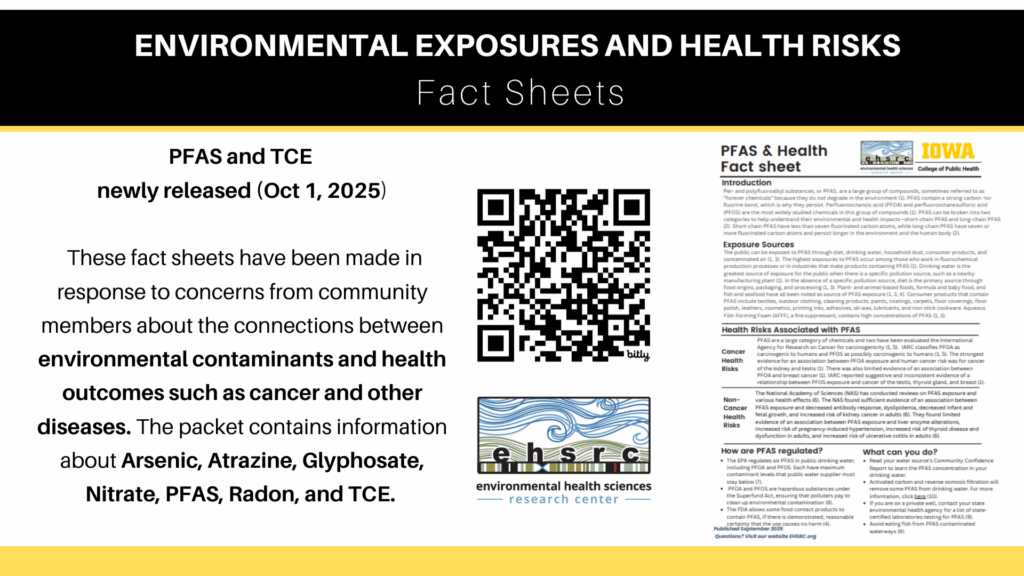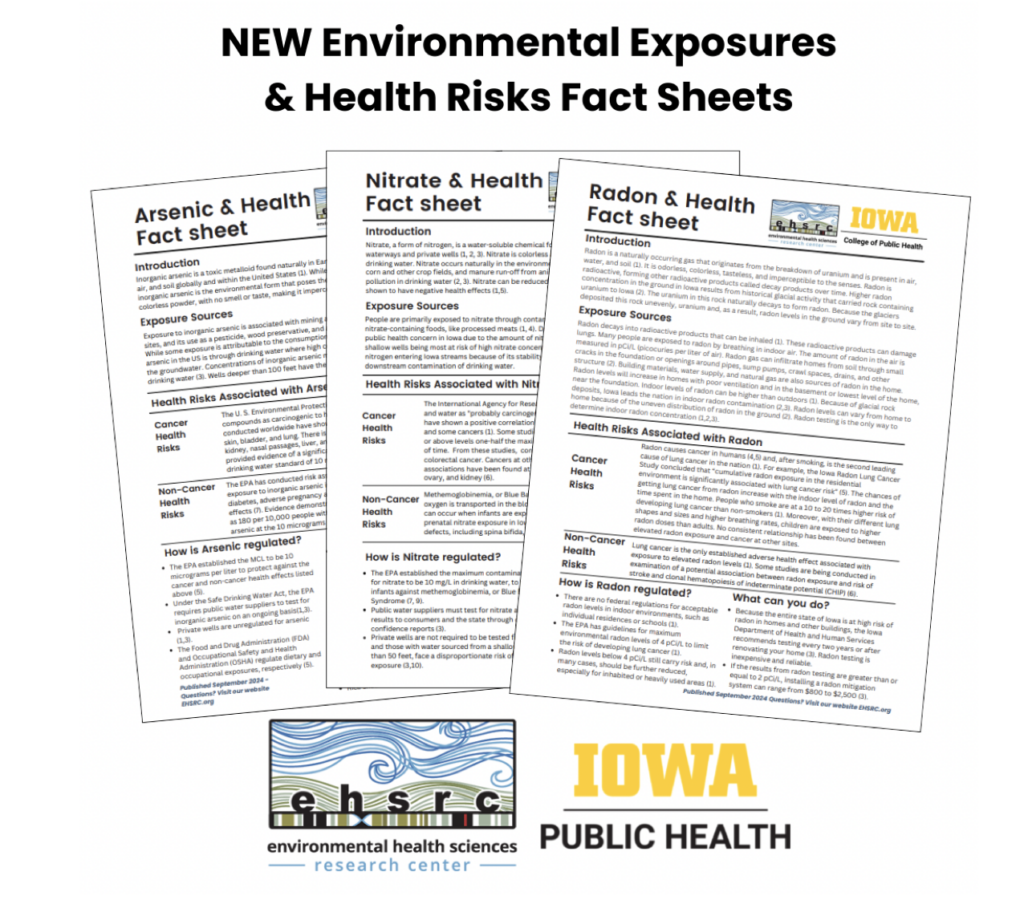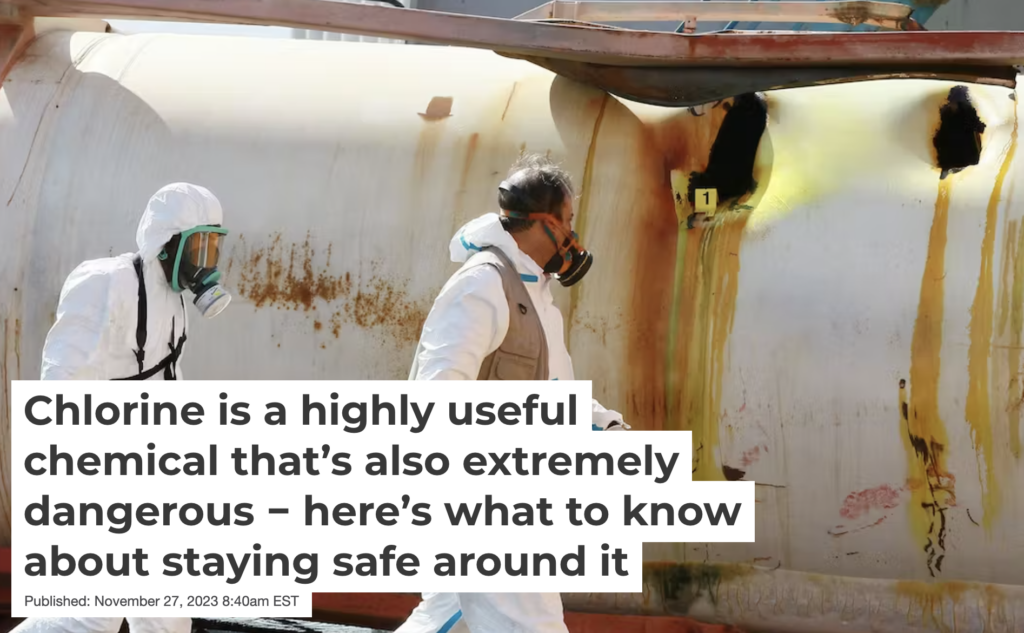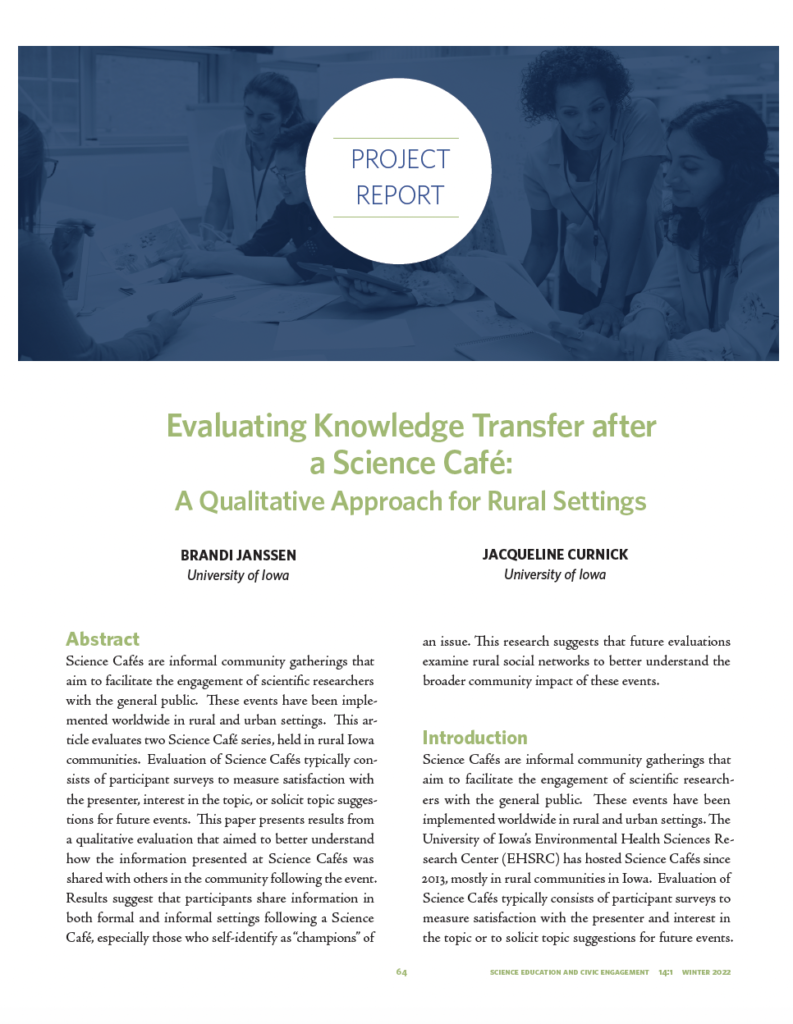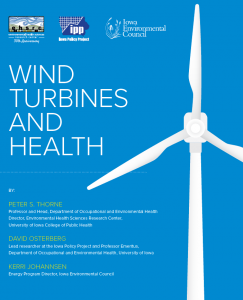PFAS and TCE are the two newest fact sheets that have been released by the EHSRC. These resources cover different environmental contaminants and how they affect health (cancer and non-cancer health risks) and what people can do to protect themselves. View all of the fact sheets here on our resources page. The full packet is available as well as each individual contaminant (Arsenic, Atrazine, Glyphosate, Nitrate, PFAS, Radon, and TCE).
